|
FILIPPINO LIPPI - ADORATION OF THE MAGI
|
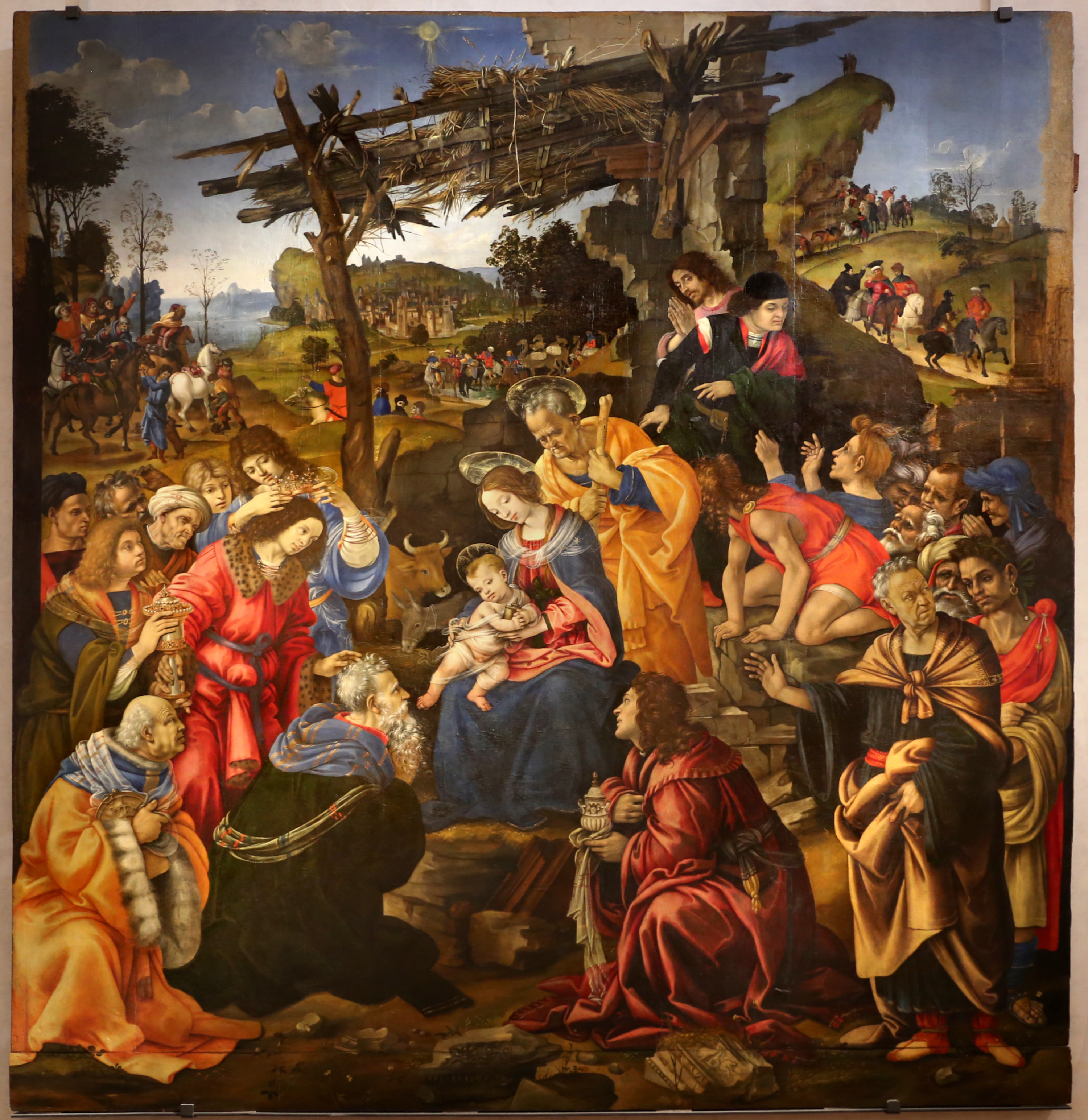
By Filippo Lippi, Public domain
1496
|
- Tempera/oil on wood panel.
- From the Italian Renaissance,
it is now in the Galleria degli Uffizi in Florence.
- The painting
commission was originally granted to
Leonardo da Vinci in 1481,
althought it remained unfinished when he left Florence to go and work for the duke of Milan, Ludovico Sforza.
- As a result, in 1496 Lippi was hired by the monks to
complete the job, some 15 years after Leonardo departed.
|
And when they were come into the house, they saw the young child with Mary his mother, and fell down, and worshiped him: and when they had opened their treasures, they presented unto him gifts; gold, and frankincense and myrrh.
(Matthew 2:11)
|
|

Dusting it off
|
- Artist and
historian Giorgio Vasari documented the painting in the home of Amerigo Benci, father of Ginevra
Benci whose portrait Leonardo had painted some years earlier.
- It came to the Uffizi in 1670; it then went to the Villa di Castello and returned to the Gallery in 1794.
|
Energetic, incisive, spontaneous, and expressive, the drawings of Filippino Lippi are among the most original and creative of the Italian Renaissance. Produced in the artistic and humanist circles of late fifteenth-century Florence and Rome for such illustrious patrons as Lorenzo de' Medici, il Magnifico, Filippino's drawings were subsequently cherished by many esteemed collectors, including Giorgio Vasari, Pierre-Jean Mariette, and Sir Thomas Lawrence.
(metmuseum.org)
|
|
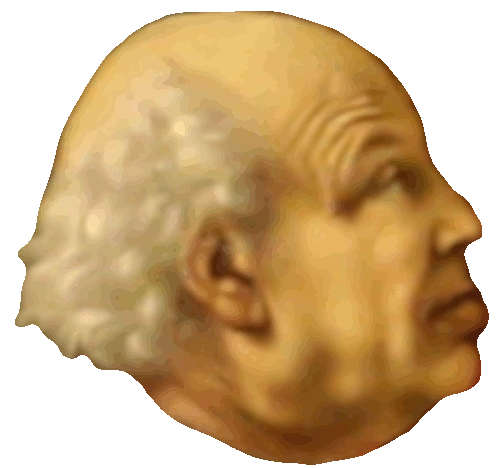
Medici men
|
- The figures surrounding the Virgin represent the three Biblical Magi and their entourages, but some are portraits depicting members of the Medici family.
- The Medici were the original Italian bankers, politicians
and church leaders, many of them were de facto leaders, dukes
and popes.
- The original mafia you might say, building
their empire which was centered in Florence, the art capital
of the world, where they hired the great artists such as the
Lippi's, da Vinci, Botticelli and Michelangelo to install a
lasting legacy of their family name.
- Filippino Lippi was
talented enough to work on the decoration of Lorenzo de' Medici's villa at Spedaletto.
|
Filippino also portrayed numerous members of the Medici cadet line, who had adhered to the Savonarolian Republic in the period in which the work was executed.
(Wikipedia)
|
|
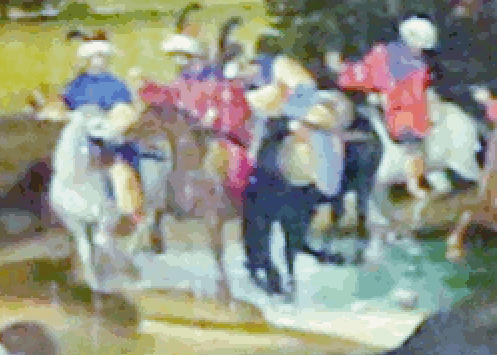
On a journey
|
- There appears to have different divisions or scenes in
the painting; both the foreground and the background are individually divided into three areas.
- This division helps to differentiate where the storyline of the painting is going and what is happening with the subject.
- In the background, the Magi and their entourage are shown
coming on the left, and leaving and going back to their own homelands on
the right.
|
In the Bible, the right hand is a symbol of God's power, authority, and favor. It's also a place of honor and status.
(Assistant)
|
|
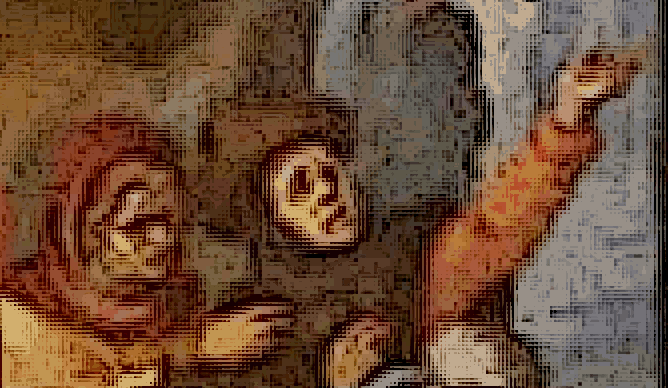
Seeking |
- In the foreground, to the left, the Magi and
diplomats are waiting to be presented to the Christ child, and
on the right, the crowd is waiting to see him.
|
Therefore the Lord himself will give you a sign: The virgin will conceive and give birth to a son, and will call him Immanuel.
(Isaiah 7:14)
|
|

Mary and Joseph
|
- This painting is specifically about the Epiphany, which
means 'a manifestation.'
|
The abundance
of gold rays and golden ornament applied with gold
leaf or shell- gold to the surface of paintings,
notably by Botticelli, but also by Filippino. Both simply carried on using the technique that Filippino’s father had
deployed to dazzling effect.
(Paul Hills)
|
|
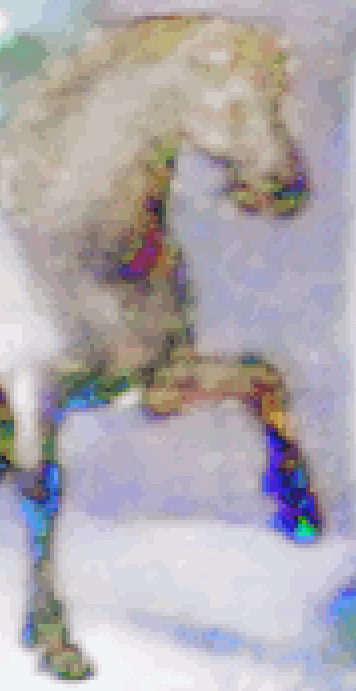
Epiphany festival
|
- Florence celebrated an Epiphany festival on January 6 at least since 1390, date of the earliest surviving record of it.
- The elaborate pageant, in which men reenacted the journey of the Magi through the streets of the city, must have looked much like the colorful throng that winds through the painting.
- By 1417 the festival was directed by a lay confraternity, the
Compagnia de’ Magi, with funds donated by the Medici.
- Lorenzo de' Medici even changed the date of his birthday
from January 1 to coincide with the feast on January 6.
|
Male members of the family participated in the procession, which passed in front of the Medici palace and began and ended at the church of San Marco, headquarters of the confraternity and an important recipient of Medici munificence. Cosimo had an image of the Adoration of the Magi in his private cell within San Marco.
(nga.gov)
|
|
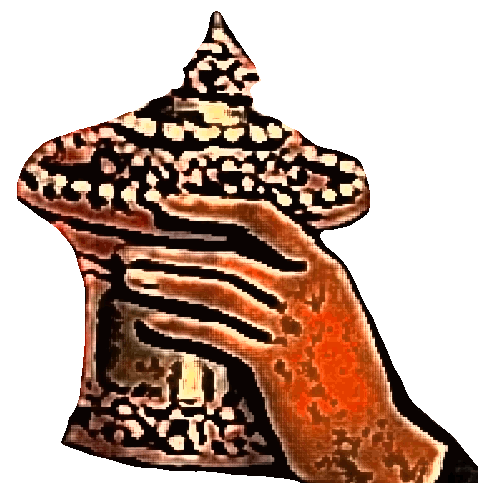
Magi gift
|
- The Adoration of
the Magi was one of the most popular subjects painted by artists
in the Middle Ages and during the Early Renaissance.
- The Magis were regarded as the patron saints of traveling merchants, and international trade in general, and large numbers of
art patrons took turns creating scenes that represented
their country's point of view on the subject.
- This was especially
prevalent in country's that had access to the Silk Road and
were sharing not only trade, but ideas.
- Artists such as
Leonardo da Vinci,
Sandro Botticelli and both Lippi's, created an Italian
representation of the Adoration.
|
The usefulness of the subject to the Church and the technical challenges involved in representing it have made the Adoration of the Magi a favorite subject of Christian art: chiefly painting, but also sculpture and even music (as in Gian-Carlo Menotti's opera Amahl and the Night Visitors). The subject matter is also found in stained glass.
(wikiwand.com)
|
|
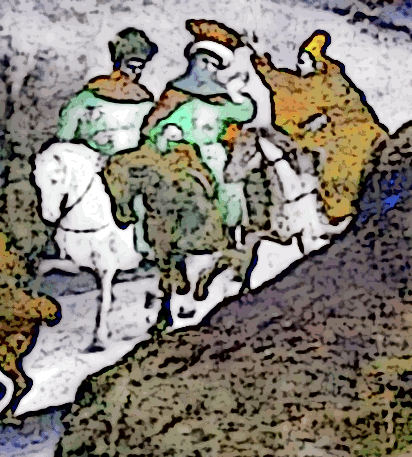
Pomp and pageantry
|
- Lippi had already made an Adoration of the Magi
15 years before this one.
- Early Renaissance paintings of this theme, such as by Fra Angelico and Fra Lippi,
Filippo's father, emphasize the pomp and pageantry of the scene.
- This painting, signed and dated by
Filippino Lippi on March 29, 1496, was commissioned by the brothers of Saint Augustine of San Donato a Scopeto.
-
Filippino clearly took inspiration from Sandro Botticelli’s
Adoration of the Magi, finished in 1476, also in the Uffizi.
|
The panel was painted for the monastery of San Donato in Scopeto, as a substitution for the one commissioned in 1481 from Leonardo da Vinci, who left it unfinished. In 1529 it was acquired by Cardinal Carlo de' Medici and in 1666 it became part of the Uffizi collection, left to the city by the last of the Medicis.
(Wikipedia)
|
|
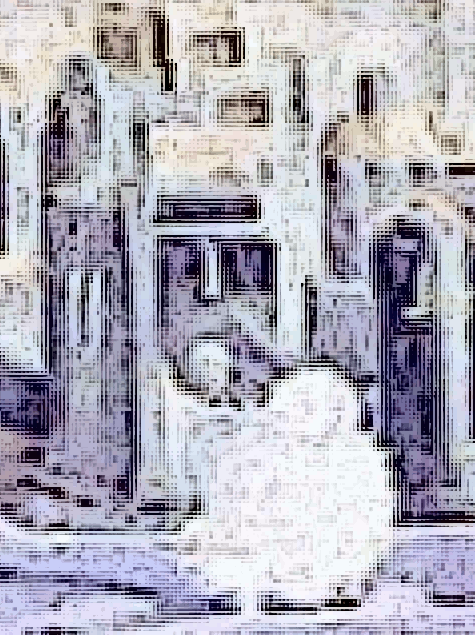
Chess pieces
|
- Similarly to Botticelli’s work, Filippino also portrayed numerous members of the Medici clan.
- Like all Renaissance paintings commissioned by the
Medici's, the scene has multiple meanings.
|
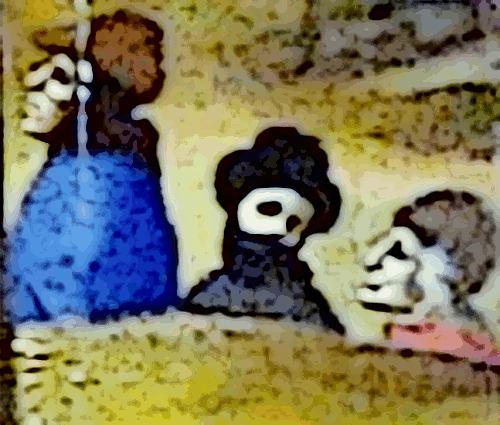
Assassination scene
|
- The birth
of Christ is first and foremost.
- Next, is the Ponzi
conspiracy and assassination of Giovanni de' Medici in 1498
which makes you wonder how this painting could have been
completed in 1496.
- There are also members of Filippino's family included
and a story of the Barbary pirates.
- The ultramarine blue
comes from lapis lazuli, which came from mines in Afghanistan
and only the rich could afford because at this time, it was
more expensive than gold.
|
Filippino's drawings display a rare freedom of handling, a taste for abstraction and mannerism, and a precocious concern with movement and expression. They share with his paintings a predilection for elaborate costumes, fanciful hairstyles, ornate settings, and the spirited reinvention of antique designs.
(metmuseum.org)
|
|
Three Magi |
|

Star of Bethlehem
|
- The painting is set in a country landscape, in front of a stable over which the Star of Bethlehem that guided the
three Magi, is shining.
- These wise men visit
the baby Jesus and worship him as a king.
- They give him gifts of gold, frankincense, and myrrh
which were meant to symbolize kingship, deity, and death.
- This is actually the end scene and the completion of the
presentation part of the Magi's story.
|
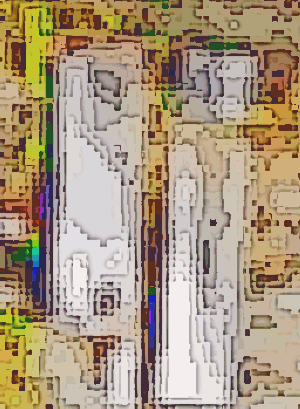
Temple of Solomon
|
- The Magi went to Jerusalem first because they thought
the Jews would know where their Messiah was to be born, but
the Jews were clueless and unaware of his birth.
- Their
leadership had kept them behind a veil.
|
After Jesus was born in Bethlehem in Judea, during the
time of King Herod, Magi from the east came to Jerusalem and asked, “Where is the one who has been born king of the Jews? We saw his star when it rose and have come to worship him.”
When King Herod heard this he was disturbed, and all Jerusalem with him. When he had called together all the people’s chief priests and teachers of the law, he asked them where the Messiah was to be born. (Matthew 2:2-4)
|
|
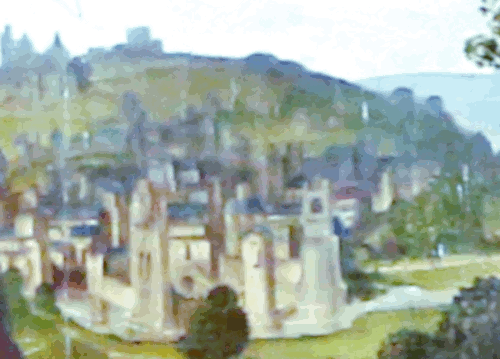
Herod's palace in Jerusalem
|
- The painting’s background tells the story of the Magi’s journey, from their discovery of the guiding star to their audience with King Herod
prior to visiting the Christ child.
- Lippi has created a semi barren terrain that
shows the desert and its oasis.
|
In Bethlehem in Judea,” they replied, “for this is what the prophet has written:
“‘But you, Bethlehem, in the land of Judah,
are by no means least among the rulers of Judah;
for out of you will come a ruler
who will shepherd my people Israel.
(Matthew 2:5-6)
|
|
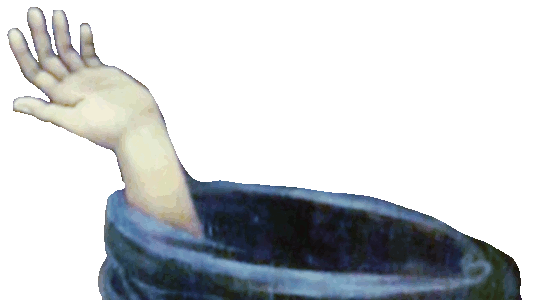
King Herod
|
- King Herod called the wise men to his palace in
Jerusalem after they had questioned the local Jews about the
whereabouts of the Christ Child.
- He told them to search
for the infant in Bethlehem and the report back to him
immediately with the child's location.
- Then you have to wonder why they should do that?
They had no alligience with Herod and weren't his subjects and
he revealed himself to be very ignorant with devious purposes.
|
Then Herod called the Magi secretly and found out from them the exact time the star had appeared. He sent them to Bethlehem and said, “Go and search carefully for the child. As soon as you find him, report to me, so that I too may go and worship him.”
(Matthew 2:7-8)
|
|
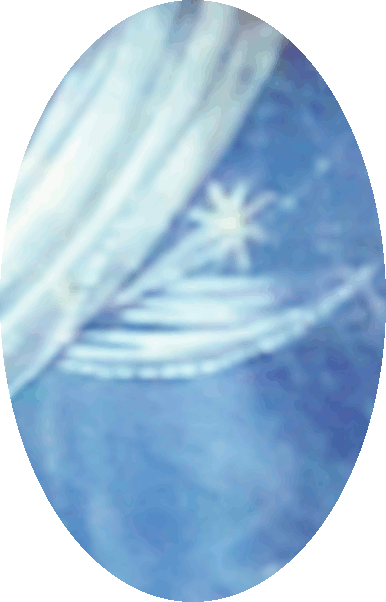
Star rose ahead of them
|
- After they had heard the king's order, they went on their way, and the star they had seen when it rose went ahead of them until it stopped over the place where the child was
born.
- The infant
is the center of everyone's attention and we see the final
presentation of gifts.
|
When they saw the star, they were overjoyed. On coming to the house, they saw the child with his mother Mary, and they bowed down and worshiped him. Then they opened their treasures and presented him with gifts of gold, frankincense and myrrh.
(Matthew 2:9-11)
|
|

Whale of a tale
|
- All together this narrative tells its own story and how the Magi disobey the King Herod, by not stopping by
his palace afterwards and telling him where the Christ Child was located.
- They knew that Herod didn't want the Christ Child to be
king and take away his own power.
- There is no reference anywhere within the background of Lippi’s painting to suggest that the Magi did stop, or even went anywhere near
the palace.
- This would help support the idea of the narrative story of the Magi going to their homelands after being presented to the Christ Child.
|
And having been warned in a dream not to go back to Herod, they returned to their country by another route.
(Matthew 2:12)
|
|

Weathered stable
|
- The scene unfolds before a weathered stable, where an elaborate array of richly dressed figures gathers to honor the infant Jesus.
- The Star of Bethlehem shines directly over the roof of the
stable which is very primitively constructed.
|
Now people are coming from the ends of the earth, from
the east and from the west, and from the north and
from the south.
(Augustine,
Sermons on the Ephiphany)
|
|
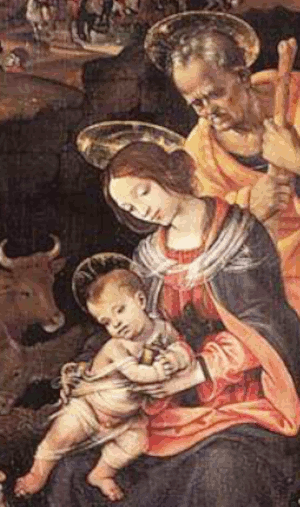
Holy Family
|
- The Holy Family is located in the center of the painting, flanked by Medici family members.
- De facto rulers of the republican Florence, the Medici, were among the greatest art patrons of any era.
|
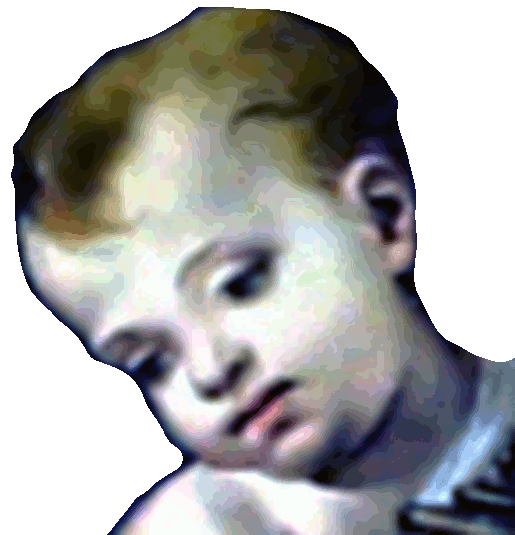
Christ Child
|
- The Medici had a particular interest in paintings that depicted the
Adoration of the Magi, the moment when the three kings, led by a miraculous star, discovered the Christ
Child.
- The clear brilliance of colors expresses festive jubilation and joy.
- Historians noted that in order to curry favor for the
younger, newly appointed branch of the Medici family,
portraits of 3 family members were included in the painting.
|
The prominence of this story, as well as the three kings or magi, is due to the great theological significance that the Biblical story holds, their exotic clothes and looks, as well as their great and expensive gifts.
(wikiwand.com)
|
|
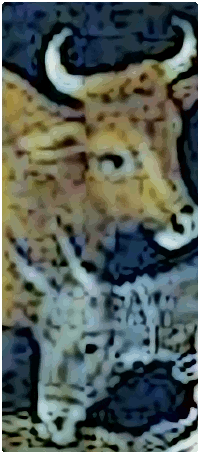
Ox and donkey
|
- The traditional ox and donkey of the Nativity stand partially obscured
and hidden at the heart of the scene and remind us that
Christ's birth took place in a stable.
- These animals carry deeper meaning: the ox represents Gentile nations while the donkey symbolizes the Jewish people,
who had yet to recognize the Messiah.
- Hinting at the future spread of Christianity through the
teachings of the Apostles.
|
Lippi uses atmospheric perspective and multi point perspective in his painting. In the foreground a viewer can see all the details, but as the viewer moves into the work of art and to the farthest point in the background. The painting becomes blurred or visually fades away.
(myerst.weebly.com)
|
|

Knights on horses
|
-
The knights and soldiers on horses represent the church alluding to the decline of paganism and the victory of Jesus over the devil.
- In the earliest depictions, the Magi are shown wearing Persian dress of trousers and Phrygian caps,
also called Liberty caps.
|
Although Phrygian caps did not originally
function as liberty caps, they came to signify freedom
and the pursuit of liberty first in the American
Revolution and then in the French Revolution, particularly as a symbol of Jacobinism (in which context it has been also called a Jacobin cap). The original cap of liberty was the Roman pileus, the felt cap of emancipated slaves of ancient Rome, which was an attribute of Libertas, the Roman goddess of liberty.
(Wikipedia)
|
|
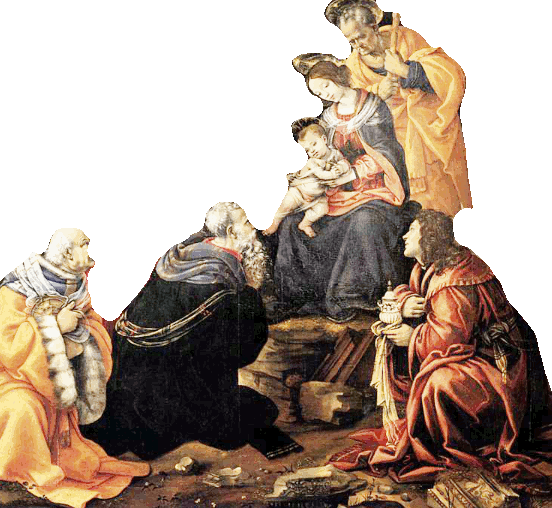
Triangulated Belle ringing
|
- The three Magi and the Holy Family are painted in a
triangular shape similar to how Leonardo da Vinci painted the scene.
- Filippino followed Leonardo’s setting, in particular in the central part of the work.
- The child, seated in his mother’s lap, holds the first gift, offered by the oldest king, under the thoughtful gaze of his father, Joseph.
who towers over the scene.
|
A great deal of the elements of style that make up this painting were influenced by artist Rogier van de Weyden’s Entombment of Christ completed in the 1450 – the high horizon, triangular shape of Mary and the Magi, and deep background are all copied from van der Weyden’s work.
(lifeofjesus2012.wordpress.com)
|
|
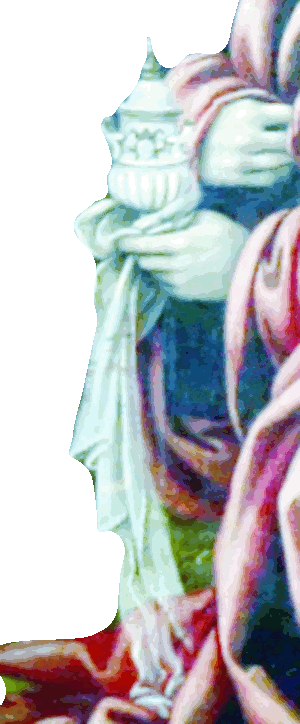
Feast of Epiphany
|
- The theme of the painting is the celebration of the
Feast of Epiphany in which, according to Augustine, all peoples respond to
the call of Christ.
- In the church calendar, the event is commemorated in Western Christianity as the Feast of the Epiphany
on January 6.
- The Eastern Orthodox Church commemorates the
Adoration of the Magi on the Feast of the Nativity on December 25.
|
They saw the star and are now kneeling in adoration of the Christ-child. They represent the Gentiles, who are also called to salvation, and so open up the Incarnation of the Savior to all. Here we see for the first time that the light of Christ is revealed not only to Israel, but to all nations, who eagerly approach the Redeemer with astonishment and wonder. Catholicity—that is, “universality”—means Christianity for all peoples. The joy that is a result of the good tidings has now burst upon the whole world.
(stpaulcenter.com)
|
|

Speculating
|
- Throughout the Middle Ages, stories began circulating speculating
about who exactly were the kings who were famous for visiting the Christ child.
- Many people assumed that they came from somewhere in the
east such as Persia.
- Images of the Magi in artwork
portray tribute-bearers from various Mediterranean and ancient Near Eastern cultures going back many centuries.
|
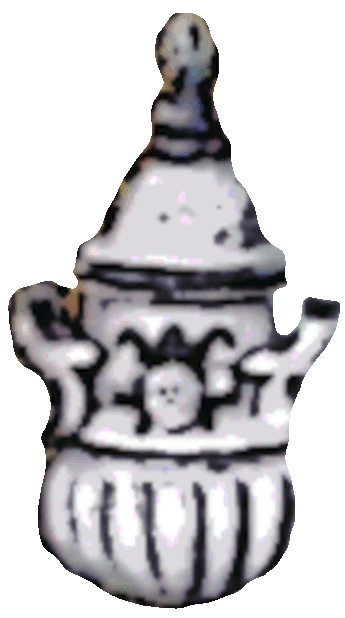
Exotic gifts from around the world
|
- By the 3rd-century the number of Magi was set at three.
- In Western tradition Melchior, Caspar (Gaspar), and Balthazar are kings of Persia, India, and Arabia, and represented as men of youth, middle age, and old age.
- Eventually it was decided
by the art patrons that the three kings should
symbolize the three main continents at the time; Europe, Asia, and Africa.
|
Occasionally from the 12th century, and very often in
Northern Europe from the 15th, the Magi are also made
to represent the three known parts of the world:
Balthasar is very commonly cast as a young African or
Moor, and old Caspar is given Oriental features or,
more often, dress. Melchior represents Europe and
middle age. (wikiwand.com)
|
|

Large crowd
|
- It is difficult to recognize the three kings who have come from the east to pay homage to the Christ Child, and who kneel before him offering their precious gifts in elegantly made pots,
because there are so many characters in the painting and an
abundance of
gifts.
|
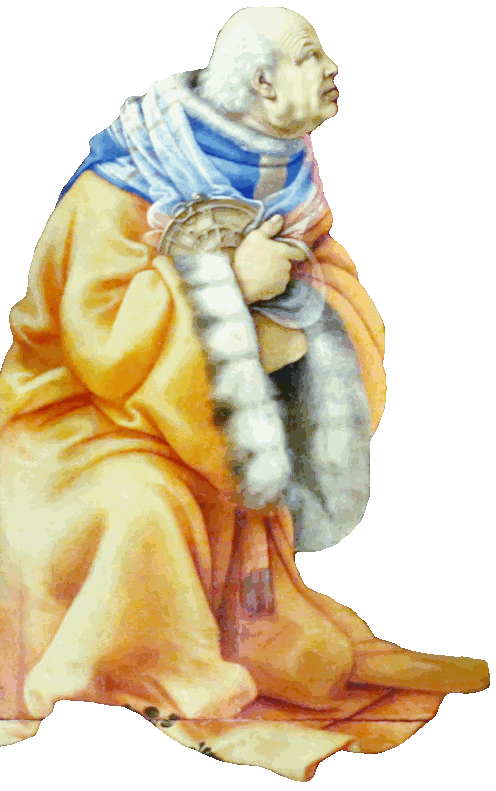
Pierfrancesco de' Medici as Magi
Caspar, the
eldest
|
- The three Magi are in the foreground and they worship Jesus by bowing down and offering him gifts.
- On the far left, kneeling in a luxurious, fur-lined yellow robe and holding an astrolabe, is Pierfrancesco de' Medici the Elder
(1430-1476), who had died 20 years before.
- He represents Old Caspar,
who is usually given Oriental features or, more often, dress.
|
By the 15th century, the Adoration of the Magi is often a bravura piece in which the artist can display their handling of complex, crowded scenes involving horses and camels, but also their rendering of varied textures: the silk, fur, jewels and gold of the Kings set against the wood of the stable, the straw of Jesus's manger and the rough clothing of Joseph and the shepherds.
(wikiwand.com)
|
|
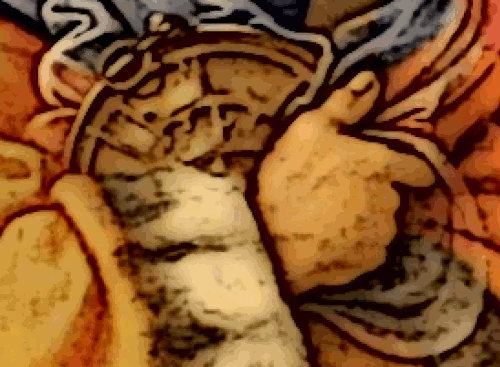
Astrolabe
for a future time
|
- The astrolabe was an ancient celestial navigation tool that speaks to the Magi’s astronomical expertise.
- It measuress the height of the stars, Moon or Sun on the
horizon and also alludes to their astrological knowledge.
- The first recorded use of the astrolabe was by the Greek mathematician Hipparchus, who lived in the 2nd-century BC
which was 200 years after Christ birth?
- The astrolabe can measure the altitude above the horizon of a celestial body, day or night; it can be used to identify stars or planets, to determine local latitude given local time (and vice versa), to survey, or to triangulate.
- It was used in classical antiquity, the Islamic Golden Age, the European Middle Ages and the Age of Discovery for all these purposes.
|
An astrolabe an instrument formerly used to make astronomical measurements, typically of the altitudes of celestial bodies, and in navigation for calculating latitude, before the development of the sextant. In its basic form (known from classical times), it consists of a disk with the edge marked in degrees and a pivoted pointer.
(Oxford Languages)
|
|
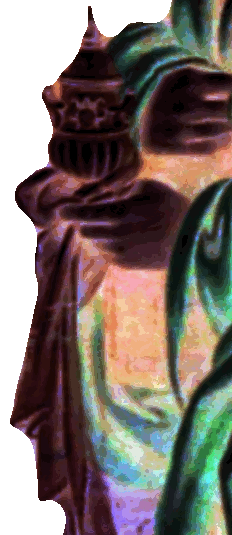
Islamic developments
|
- Medieval Islamic astronomy comprised the astronomical developments made in the Islamic world, particularly during the Islamic Golden Age
during the 9th–13th centuries, and mostly written in the Arabic language.
- These developments took place in the Middle East, Central Asia, Al-Andalus, and North Africa, and later in the Far East and India.
- A significant number of stars in the sky, such as Aldebaran,
Altair and Deneb, and astronomical terms such as alidade,
azimuth, and nadir, are still referred to by their Arabic
names.
|
A large corpus of literature from Islamic astronomy remains today, numbering approximately 10,000 manuscripts scattered throughout the world, many of which have not been read or catalogued.
(Assistant)
|
|
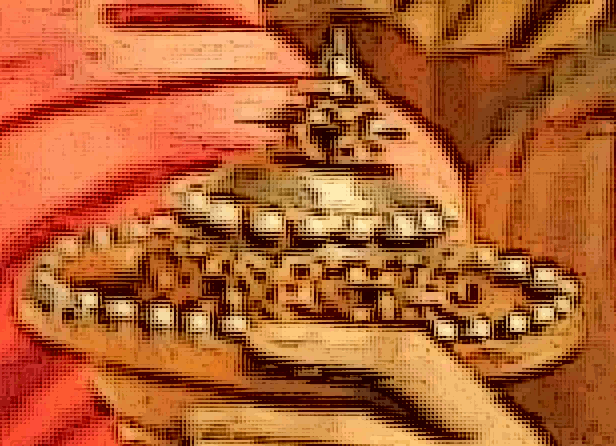
Timing device
|
- The astronomical interest varied between folk astronomy (of the pre-Islamic tradition in Arabia) which was concerned with celestial and seasonal observations, and mathematical astronomy, which would inform intellectual practices and precise calculations based on astronomical observations.
-The lunar calendar that was based on the calculations of the astrolabe was of great significance to the religion of Islam,
as it determines the dates of important religious observances such as Ramadan.
|
In regard to the astrolabe's religious function, the demands of Islamic prayer times were to be astronomically determined to ensure precise daily timings, and the qibla, the direction of Mecca towards which Muslims must pray, could also be determined by this device.
(Assistant)
|
|
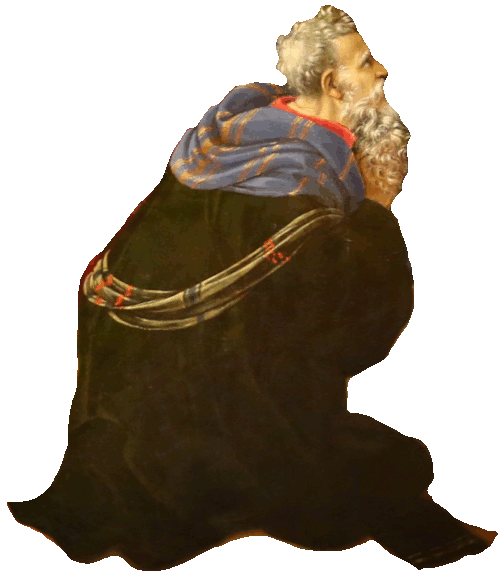
Magi kneels
on left
Melchior
|
-
Melchior represents Europe and middle age.
- These wise men gave
the Christ Child the same respect that they would give to their own kings and princes.
|
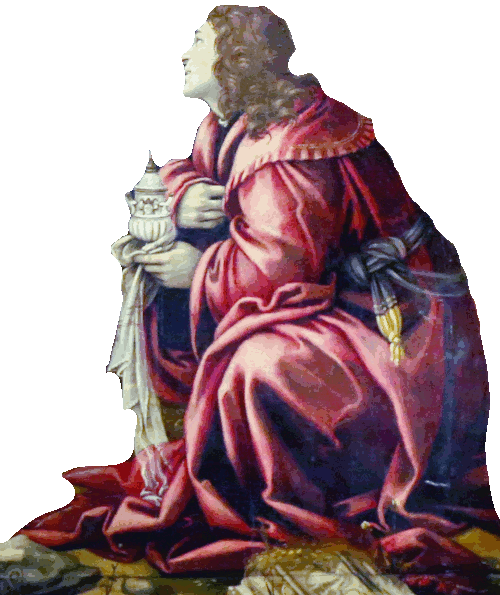
Magi kneels on right
Balthasar
|
- Balthasar is very commonly cast as a young African or
Moor.
- Gold: A symbol of kingship on earth.
-
Frankincense: An incense that symbolizes deity.
-
Myrrh: An embalming oil that symbolizes death.
|
Medici Assassination |
|
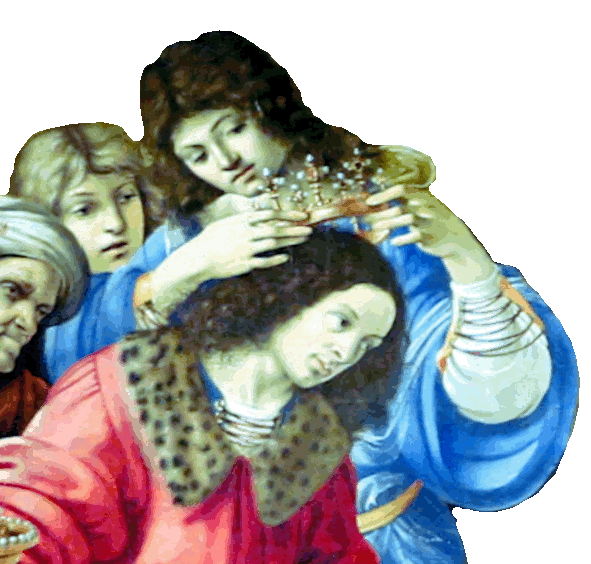
Lorenzo de' Medici
|
- Behind Pierfrancesco the Elder, sitting is his son Lorenzo
di Pierfrancesco de' Medici (1463–1503), the Popolano, from whom a page is removing a crown
-
He was known as
Lorenzo the Magnificent.
|
The Medici were one of the most powerful families in Europe, holding influence over the continent for roughly 500 years. They began as a prominent family of the Arte della Lana, Florence’s wool guild. The family later became known for banking, revolutionizing the entire process. Due to their wealth and status, they quickly infiltrated Italian politics. Their political dynasty began with Cosimo de’ Medici. Cosimo became an avid patron of the arts, allowing Florence to flourish as one of the Renaissance’s main artistic epicenters.
(thecollector.com)
|
|
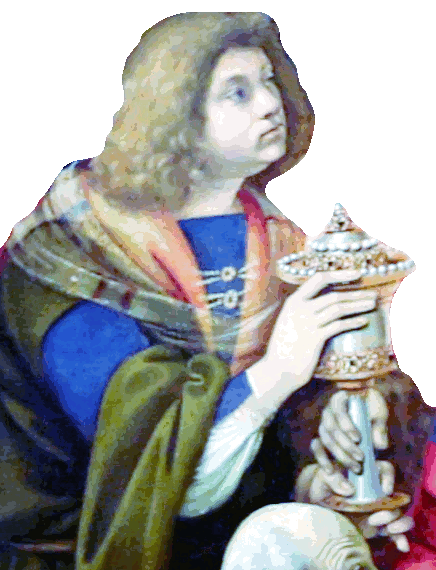
Giovanni de' Medici the 'commoner' |
- Giovanni de' Medici (1467–1498). is depicted as a
page, with a large gold and silver
lidded chalice in his hand.
-
He is holding it together with his older brother, Lorenzo, and it is a gift
for baby Jesus.
- This causes some confusion in
the painting as to who the three Magi are, because the Medici brothers are holding
this chalice as a gift
for the Christ child.
- Although it is pretty clear that
are three well-dressed men kneeling in the foreground are the
Magi.
|
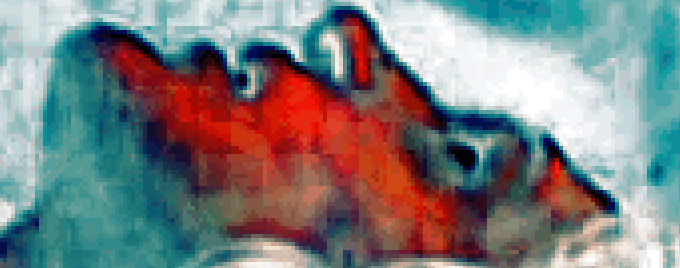
Giovanni de' Medici assassinated |
- Giovanni was assassinated in 1498 by a rival family in what
was called the Pazzi consiracy.
- His brother, Lorenzo, was
wounded but survived.
|
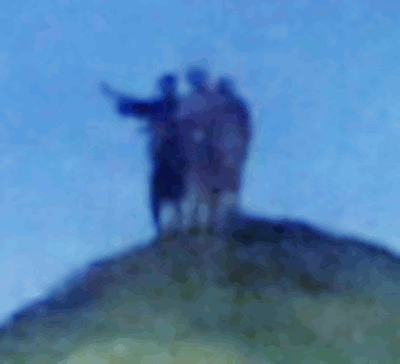
Wise men
|
- There is speculation that the painting was begun after
November 1494, due to local politics.
- This is because
Florentines had banished the head of state, Piero di Lorenzo
de' Medici (1472-1503), also known as Piero the Unfortunate, who was incompetent and only ruled for
2 years.
- He was the son of Lorenzo de' Medici (Lorenzo
the Magnificent).
-
In Piero's place, the Florentines welcomed French king Charles VIII.
- The
royal procession in the painting was led by Lorenzo, Piero's
father, who is
portrayed in Lippi's painting as the young king.
|
Piero di Lorenzo de' Medici was the eldest son of Lorenzo de' Medici (Lorenzo the Magnificent) and Clarice Orsini. He was raised alongside his younger brother Giovanni, who would go on to become Pope Leo X, and his cousin Giulio, who would later become Pope Clement VII.
(Wikipedia)
|
|
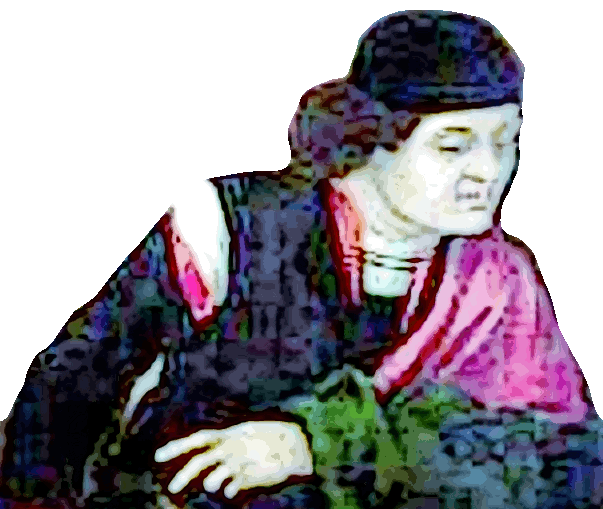
Piero the Unfortunate |
-
Piero was educated to succeed his father Lorenzo the
Magnificent as head of the Medici family and de facto ruler of the Florentine state, under figures such as Angelo Poliziano or Marsilio Ficino.
- However, his feeble, arrogant, and undisciplined character proved unsuited
for the role.
- He was in power from 1494 to 1496 when Charles VIII
of France overtook
him after he took sides with him and surrendered the town of
Pisa, as well as the the fortresses of Pietrasanta and Sarzana.
|
Angelo Poliziano later died of poisoning, very
possibly by Piero, on 24 September 1494. Piero was also constantly at odds with his cousins, Lorenzo and Giovanni, the two sons of Pierfrancesco de' Medici, who were both older and richer than Piero.
(Wikipedia)
|
|
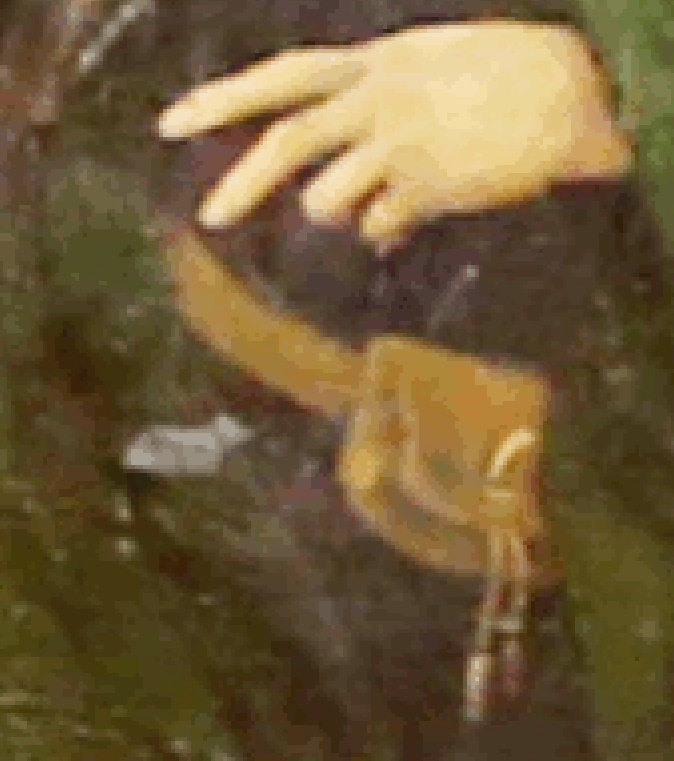
Judas money bag
|
- A money bag worn by Piero, who located over the heads of
Joseph and Mary at the very top of the painting, is believed to refer to Augustine's
condemnation of the Jews, who turned away from divine
revelation.
- He also represents Judas of course, the head
of the Medici banking cult, Cosimo Medici and the ousted
younger member of the family, Piero the Unfortunate who
betrayed Florence.
- Judas betrayed Christ by taking 30
shekels of silver from the chief priests, and Piero swung a
bad deal with Charles and lost everything.
- Both Judas and
Piero had second thoughts about their decisions and Judas even
gave the money back.
|
The enlightenment of the Magi, is deliberate witness
to the blindness of the Jews.
(Augustine, Sermons on the Ephiphany)
|
|

Piero died in exile |
- Piero was so bad, even his cousins, Lorenzo and Giovanni, allied themselves with Charles
VIII, sending him messages to pledge their support and funds.
- Piero was especially known for his unwise decisions, and actions as ruler of Florence in 1494, leading to his family's expulsion from the city.
- They city of Florence felt betrayed and Piero left for
Venice.
- He died in exile in 1503 at age 31.
|
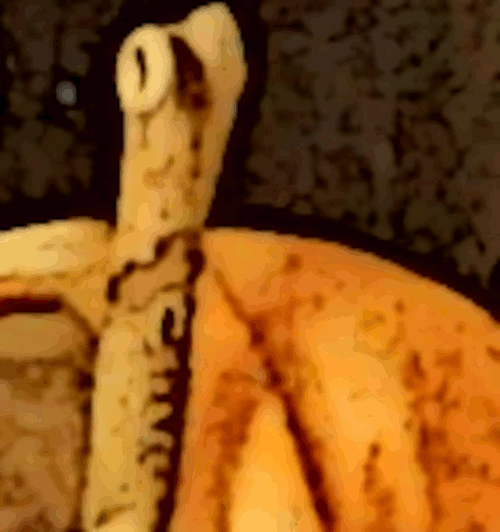 , ,
Leo X |
- A member of the Medici family did not rule Florence again until 1512, when the city was forced to surrender by Giovanni de' Medici, who in 1513 was elected Pope Leo X, solidifying the family's power.
- He the second son of Lorenzo the Magnificent.
- Leo X made Rome a cultural center and a political power, but he depleted the papal treasury.
- By failing to take the developing Protestant Reformation seriously, he contributed to the dissolution of the Western church.
- Leo excommunicated Martin Luther in 1521.
|
Leo X was not only the head of the Western Christian church but also the temporal ruler of the Papal States and head of the Medici family that ruled the Florentine republic. To exert his influence in Italy, he resorted to the common practice of nepotism (granting offices or benefits to relatives, regardless of merit).
(Britannica)
|
|
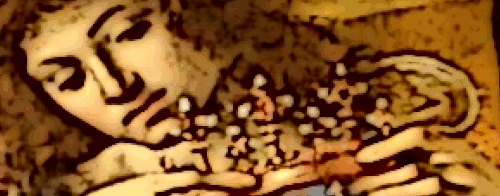 , ,
Charles VIII of France |
-
Charles VIII, called the Affable (1470-1498), was King of France from 1483 to his death in 1498;
he succeeded his father Louis XI at the age of 13.
- By the
time he reached age, he showed no aptitude for government: he was in poor health
after suffering a feeble childhood and of poor intelligence.
|
 , ,
Anne of Brittany and Charles |
- Charles married Anne of Brittany in 1491 after she had already been married by proxy to the Habsburg Holy Roman Emperor Maximilian I in a ceremony of questionable validity.
- Maximilian was so busy with problematic succession, he never
made a claim and Charles became administrator of Brittany in
France.
|
In December 1491, in an elaborate ceremony at the
Château de Langeais, Charles and Anne of Brittany were
married. The 14-year-old Duchess Anne, not happy with
the arranged marriage, arrived for her wedding with
her entourage carrying two beds.
(Wikipedia)
|
|
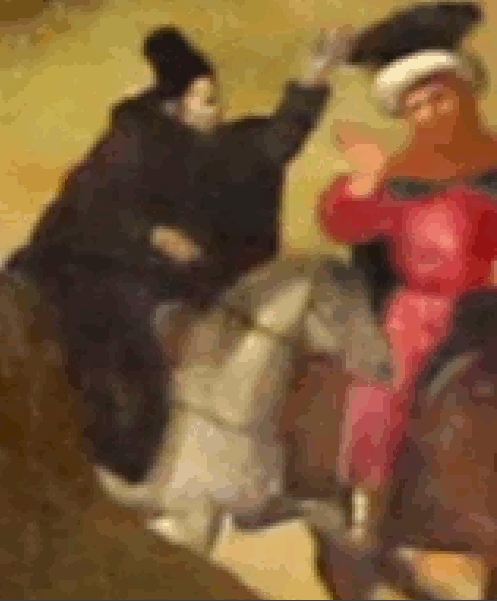 , ,
Charles conquers the Italian Peninsula |
- Charles invaded Italy with 25,000 men, including 8,000 Swiss mercenaries, in September 1494, and marched across the peninsula virtually unopposed
and conquered Pisa, Florence and Naples, where he was crowned
King of Naples.
- Filippio Lippi contributed to the
festive decorations that greeted Charles VIII when the French
King entered Florence, although they were short lived.
- He soon conquered the Italian Peninsula without much opposition.
- This absurd ambition started a series of Italian wars that
lasted more than 50 years and gained the French kings only momentary glory in return for a vast outlay of men and money.
-
In the end, Charles VIII lost all the gains that he had made in Italy
and he was barely able to escape back to France.
|
Charles had been lured to Italy by Ludovico Sforza (Ludovico il Moro), ex-regent of Milan, as a way to eject Ludovico's nephew Gian Galeazzo Sforza and replace him as duke.
(Wikipedia)
|
|
 , ,
Friar Savonarola |
-
There were many in the Republic of Florence who appreciated the presence of the French king and his Army.
- The famous fanatical Dominican priest Girolamo Savonarola believed that King Charles VIII was God's tool to purify the corruption of Florence,
although the reason for that is unclear.
- Savonarola claimed to be a prophet and believed that once Charles had ousted the evil sinners of Florence, the city would become a center of morality.
-
He correctly predicted the exile of Lorenzo's son, Piero de Medici
and you have to admit, the Reformation followed soon after.
-
Believing that Charles was a divine instrument of change,
therefore, Florence was the appropriate place to restructure the Church.
|
This situation would eventually spill over into another conflict between Pope Alexander VI, who despised the idea of having the king in northern Italy where the Pope feared the King of France would interfere with the Papal States, and Savonarola, who called for the king's intervention. This conflict would eventually lead Savonarola to be suspected of heresy and to be executed by the State.
(Wikipedia)
|
|
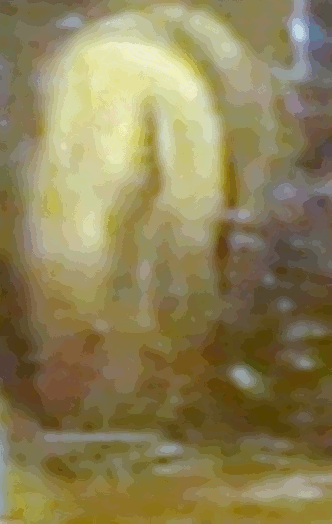 , ,
Knocked out by a door |
- Charles, 27, died in 1498, two and a half years after his retreat from Italy, as the result of an accident.
- While on his way to watch a game of jeu de paume (real tennis) he
supposedly struck his head on the lintel of a door at the Château d'Amboise, his place of birth, but that has been subject to re-analysis.
- He laid down on a straw mat at 2pm and died 9 hours later.
- A study also hypothesized Charles actually died of severe brain injuries that could have been caused by an epileptic condition, itself a result of neurosyphilis.
- Charles and Anne had
5 children, the Dauphin of France, the eldest lived to age 3.
|
The man with syphilis depicted on the well-known Albrecht Dürer’s print has been identified as Charles VIII by some, and King Charles VIII presented with numerous symptoms possibly related to secondary syphilis. This artistic representation was probably created because syphilis had spread after the invasion of Naples by Charles VIII. A plague occurred among the French troops because of numerous rapes.
(sciencedirect.com)
|
|
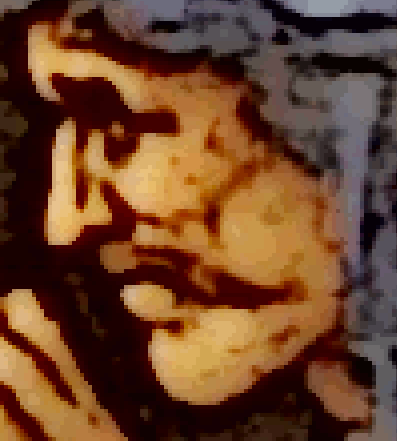
Bishop Francesco Salviati
|
-
This priest stands to the far right of the three Magi.
- He was one of the organizers of the Pazzi conspiracy, a plot to displace the Medici family as rulers of the Florentine Republic.
- The figures around
him are all portrayed as solemn and dignified.
-
He is standing on the opposite side of the Holy family and
Magi, more than likely he is the bishop of Pisa, Francesco Salviati
(1443-1478), who
was hung in the Pazzi conspiracy.
- Salviati was the archbishop of Pisa from 1474 to 1478,
however, his appointment was opposed by the Medici.
- The cities of Pisa and
Florence were staunch rivals during this period.
|
A blood-member of the Salviati family (to whom Pope Sixtus IV had re-awarded the papal banking contract after taking it away from the Medici), he was also related by marriage to the Pazzi, Medici, Vettori, and other powerful families.
(Wikipedia)
|
|

Assassin's Creed
|
- Salviati sent his nephew Raffaele Riario to lure Lorenzo and Giuliano into a trap by inviting them to
a cathedral mass, where the attack would take place.
-
When the bell that was rung during the ceremony sounded,
Salviati was to go to the Palazzo Vecchio and kill another
Medici ally and take control of the building.
- Salviati was
hoping to be received by the Florentine populace as a
liberator but he was met by a
lynch mob who hung him instead.
|
Francesco Salviati appears as a minor antagonist in the video game Assassin's Creed II, in which he is depicted as a member of the Templar Order, who within the game's storyline are responsible for the Pazzi conspiracy.
(Wikipedia)
|
|
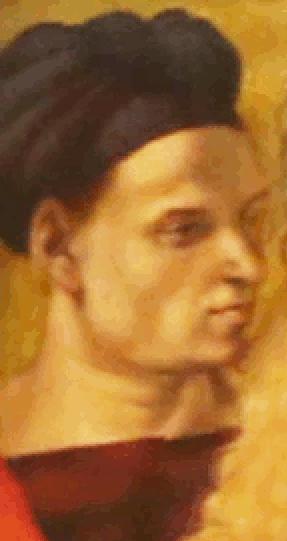
Francesco de' Pazzi
|
- Francesco de' Pazzi, a banker and papal treasurer, was a central figure in the Pazzi
Conspiracy that sought to overthrow the Medici family as the
rulers of Florence.
- The Pazzi had reasons of their own to turn against the Medici, not least the decision of Lorenzo to introduce a law that prevented a considerable sum of money flowing into the Pazzi coffers.
- Pope Sixtus was working on enriching his own side of the
family.
- Francesco murdered Giuliano de’ Medici, stabbing him to death during mass at the Florence Duomo as the conspirators attempted to seize control.
- Giuiliano was stabbed anywhere from 12 to 19 times.
|
The administration of the papal finances was a coveted prize for any banking family and Pope Sixtus IV’s decision to take responsibility away from the Medici Bank in favour of the Pazzi antagonised Lorenzo in particular.
(italyonthisday.com)
|
|
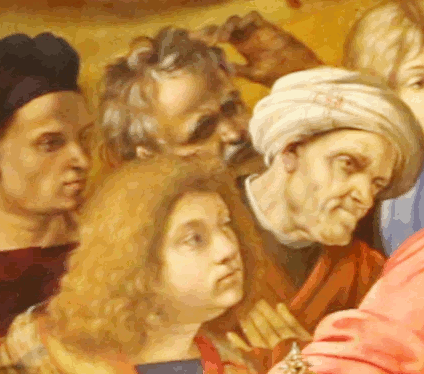
Francesco Pazzi
(far left) with hands on Giovanni
|
- In this scene, Giuliano is embraced by his assassin,
Francesco de' Pazzi, seemingly in an act friendship, but in
reality, an act of betrayal akin to the kiss Judas gave to Jesus.
- Within hours, despite Lorenzo appealing for calm, an angry mob determined to exact revenge had hunted down and killed more than 30 conspirators or suspected conspirators, including Francesco.
|
A law was passed, by virtue of which the wife of Giovanni de' Pazzi was robbed of her inheritance, and it was given to Carlo. In this piece of injustice the Pazzi at once recognized the influence of the Medici. Giuliano de' Medici often complained to his brother Lorenzo of the affair, saying he was afraid that by grasping at too much they would lose all.
(Machiavelli)
|
|
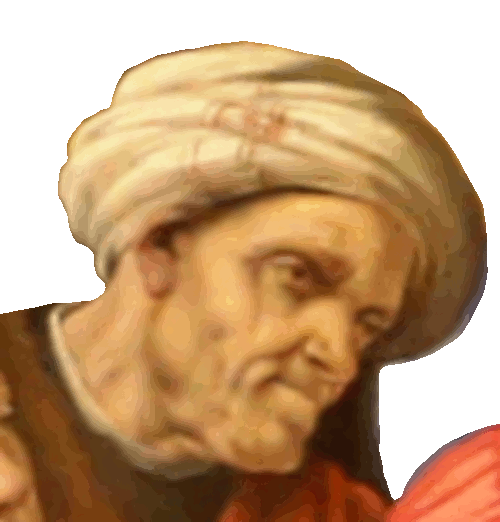
Bernardo Baroncelli
|
- It was Bernardo Bandini di Baroncelli who cleaved the skull of Giuliano with his sword.
- More than 30 suspected conspirators were caught and killed within hours of the attack and over the course of the next
8 months some 50 more were captured and executed.
- Baroncelli, who had escaped to Constantinople, was arrested and returned, to be hanged from a window of the Palazzo del Capitano del Popolo while still dressed in Turkish clothing.
- Leonardo da Vinci was present at the time of
Baroncelli's death several months later, and made a sketch of
him hanging.
|
Giuliano was assassinated by Francesco de' Pazzi together with Bernardo Bandini di Baroncelli, suffering a sword wound to the head as well as being stabbed 19 times. Lorenzo was attacked by two of Jacopo Pazzi's men, but managed to escape.
(italyonthisday.com)
|
|
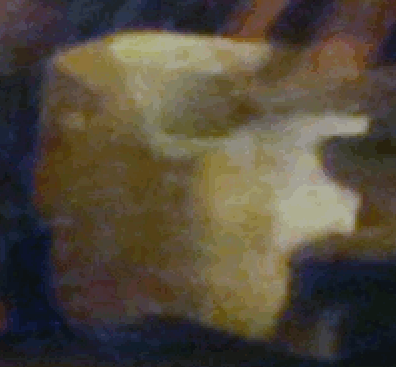
Crumbling architecture
|
- The crumbling architecture alludes to the end of the old
primative pagan order brought about by Jesus’ birth.
- A new city will be built there soon.
|
Barbary Pirates |
|
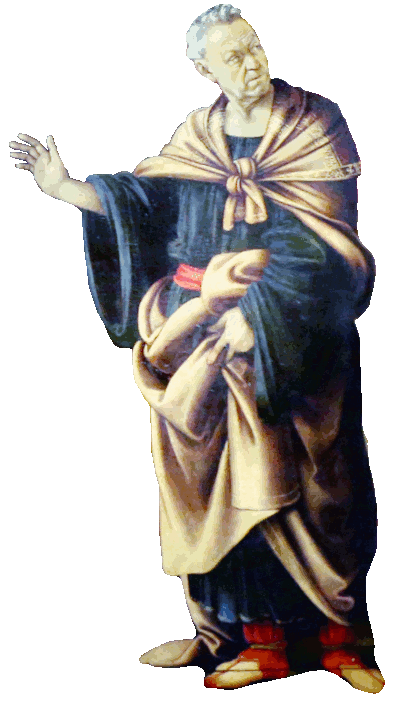
Fra Filippo Lippi, a monk and Filippino's father
Pointing the way
to Christ
|
- The priest is pointing the way to the Christ child for
the black-skinned figures standing behind him.
-
Incidently, in 1432, the Moors on the Adriatic abducted Filippo Lippi,
Filippino's father, while he was traveling with friends.
- These Moors, known as the Barbary pirates,
or Berbers, held Lippi captive for roughly 18 months, perhaps longer.
- Some claim he became a slave in Northern Africa and that his skill in portraiture was his key to escape.
|
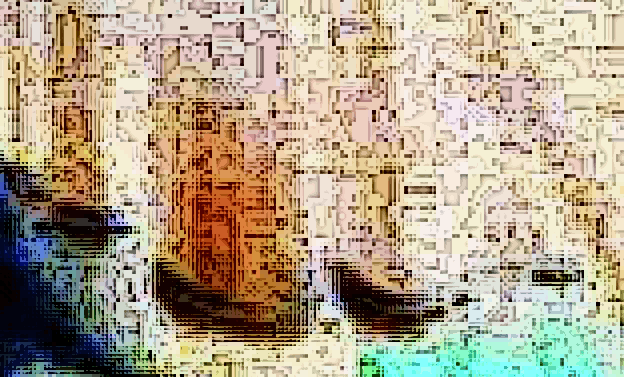
Sea tossed
|
- Allegedly Lippi created a portrait of his captor, or in some stories the captain of the pirates,
and his captor was so impressed that he promoted him to a
painter.
- He went missing for a few years the same way
Leonardo seemed to go missing, very mysteriously.
|
At some point, his painting earned him high status in Africa and eventually his freedom. Whether or not this story is true is up for debate. However, there is a gap within his career that conveniently aligns with his supposed abduction. Oddly enough, from 1431 to 1437, there is no account of his career.
(thecollector.com)
|
|
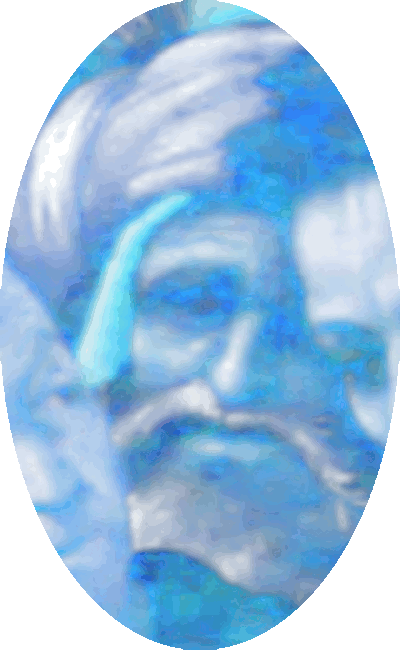
Barbary pirates
|
- Barbary pirates, who were Muslim corsairs and privateers operating from
the North Africa in what is now modern-day Algeria, Morocco,
Tunisia, and Libya.
- Barbary Pirates: The Masters of the Mediterranean Slave Trade 1500–1830.
- They operated from bases along the Barbary Coast of North Africa,
and were notorious for their attacks on Christian shipping in the Mediterranean and Atlantic.
- Their actions fueled widespread fear and outrage in Europe and the Americas.
- The pirates' motives included religious hatred, as well as economic gain from enslavement and ransom.
|
Corsairs were privateers or pirates who were
authorized by a nation to attack ships of a foreign
enemy. The term is most associated with the
Mediterranean Sea, where corsairs operated from the
late 14th century to the early 19th century.
(Wikipedia)
|
|
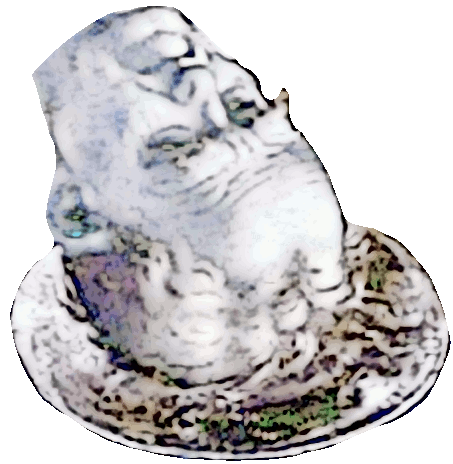
Holy war
|
- Both the Muslims and Christians considered this a holy
war.
- In the 15th and 16th centuries, the protagonists of
this war in the Mediterranean were the Ottoman Empire and
Spain, and later, the Habsburgs.
- The Spanish kingdoms
pushed the Muslims out of the Iberian Peninsula, while the
Ottoman Empire conquered Constantinople in 1453 then purchased
further west by both sea and land.
- This constant state of
war was the perfect breeding ground for piracy.
|
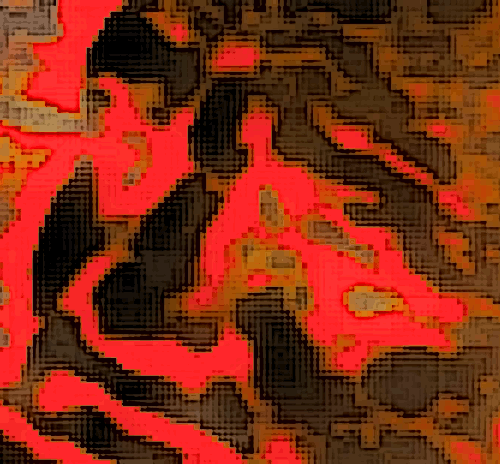
Berber rage
|
- In 1492, Spain conquered the Emerate of Granada and this
caused a mass exodus from the last Muslim stronghold on the
Iberian Peninsula and created a huge influx of unemployed
individuals to North Africa.
- Many of them joined the
corsairs, hoping to exact revenge on the Spanish.
|

Barbary Coast
|
- The pirates captured Christian sailors and passengers, holding them for ransom or selling them into slavery in North African slave markets.
- Some captives were ransomed, others were forced into hard labor, and many perished.
|
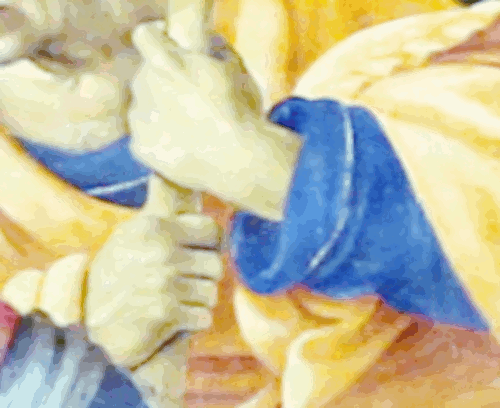
Stirring the pot
|
- There were also Christian corsairs who were known for
hunting Ottoman ships as privateers.
- The corsairs brought
goods and slaves to the Barbary Coast markets and their spoils
and the income from the slave trade financed public buildings
such as mosques and port facilities.
- Their activities
soon became so important, that Barbary Coast had nothing to
sell but its prowess in piracy and other nations would hire them
as mercenaries.
- A 10-20 percent share of the profits was
also taken by the governor to pay for the upkeep of the port.
|
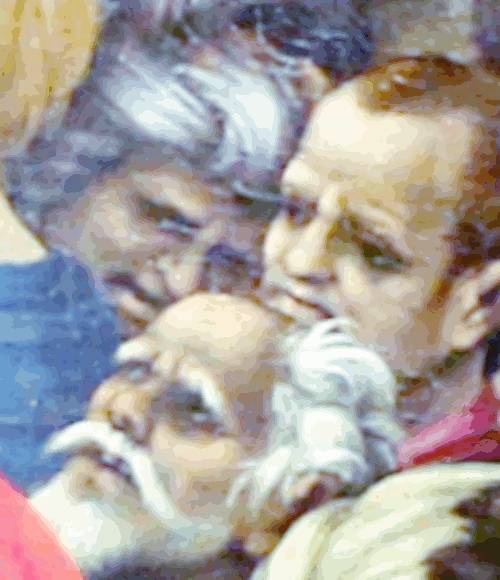
Slaves in Barbary
|
- The slaves in Barbary were of many ethnicities, and of many different religions, such as Christian, Jewish, or Muslim.
- In addition to seizing merchant ships, the
pirates engaged in razzias, raids on European coastal towns
and villages, mainly in Italy, France, Spain, and Portugal,
but also in the British Isles and Iceland.
- The Barbary pirates were mostly Berbers, Arabs, and other Muslims, but some came from Christian Europe.
|
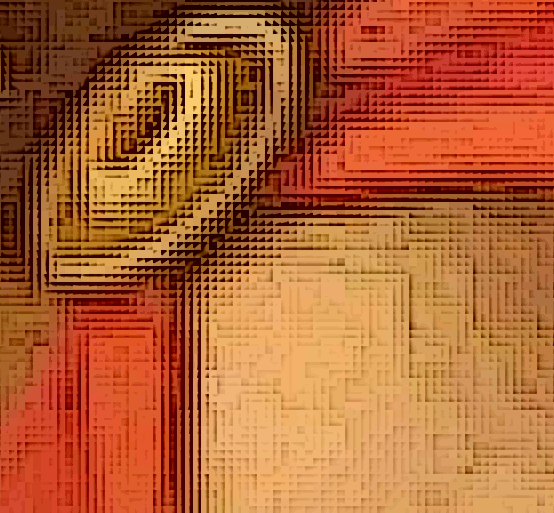
Little Moor
|
-
After the Reformation, the Christian reconquest of Muslim Spain, the Spanish Crown, in collaboration with the Catholic Church, ordered the conversion of Muslims to Christianity.
- This led to the emergence of the 'Moriscos,' Spanish for
'little Moors,' who were former Muslims and their descendants.
- In the early 17th-century, there were as many as 15,000
converted Christians living in the Barbary states and they
made up a third of the corsairs.
|
The "Moriscos" were Muslims or their descendants in Spain who were forcibly converted to Christianity in the 16th century but remained largely attached to their Islamic faith, and were ultimately expelled from the Iberian Peninsula between 1609 and 1614.
(Assistant)
|
|
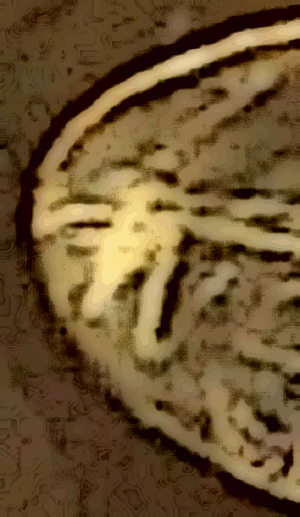
Ships with galleys
|
- The corsairs had used oar-driven ships with galleys, like everyone
in the Mediterranean, but they had a short range and required
a lot of rowers.
- Sailing ships extended the range of the
corsairs into the Atlantic Ocean and they were able to raid
England, Iceland and even Newfoundland in Canada.
- They
became such a threat to the leaders in European countries that
they began to broker treaties with the Barbary nations.
|
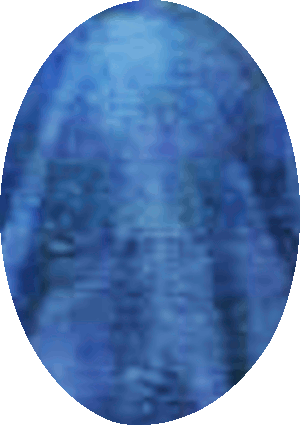
Elephant
|
- In 1662, Britain had made
the first treaty and this required a 'tribute' or large sum of
money be paid, and then annual payments.
- The annual payments might be cash, military supplies, or expensive presents for the ruler.
- A treaty might also include ransom money for the release of a nation's citizens held captive.
- What was even worse, some of the nations under attack by the
pirates, would hire some of them as mercenaries for their own
navies to fight against the pirates.
|
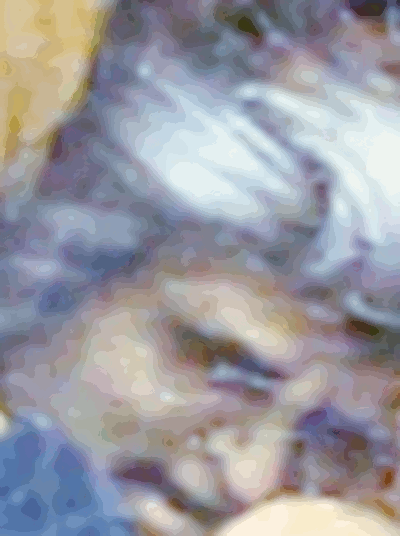
Barbarossa
|
- After finding American commerce in the Mediterranean had almost stopped due to the pirates, the Continental Congress agreed in 1784 to negotiate treaties with the four Barbary States.
- America no longer had the protection of the English Navy
after the Revolutionary War.
- Congress appointed a special commission, consisting of John Adams, Thomas Jefferson, and Benjamin Franklin, to oversee the negotiations.
- The following year, Congress authorized a maximum of $80,000 to spend on tribute treaties with all the Barbary States,
and later $20,000 to Morocco.
|
In 1466 Hayreddin Barbarossa was born on the Greek island of Lesbos. In his youth he joined his brother on pirate raids in the Mediterranean. 1518 When his brother died, Barbarossa succeeded him as leader of the Algiers corsairs. He then adopted the nickname “Barbarossa.”
(Assistant)
|
|
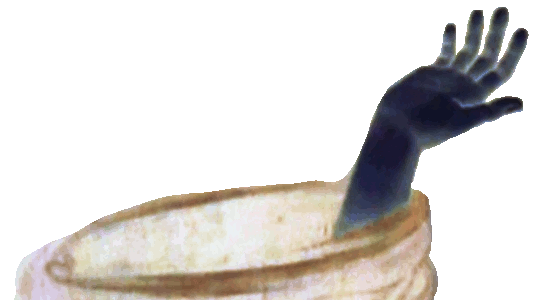
Hand out
|
- Great, so
we just had Congress pay them ransom and the plundering
continued for decades afterwards.
- Several years later,
the U.S. did form a navy, and piracy became less problematic
when higher powered navy ships arrived.
- Additionally, as time passed, many coastal communities
move inland and the corsairs had difficulty finding suitable
targets.
|
In 1796, the United States signed a peace treaty with Algiers. The United States agreed to pay $642,500 plus annual tribute of naval supplies and presents to the dey. Over the next two years, the United States negotiated similar tribute treaties with Tripoli and Tunis. The treaties with these countries cost a total of $160,000 plus supplies and presents to the Barbary rulers. (teachdemocracy.org)
|
|
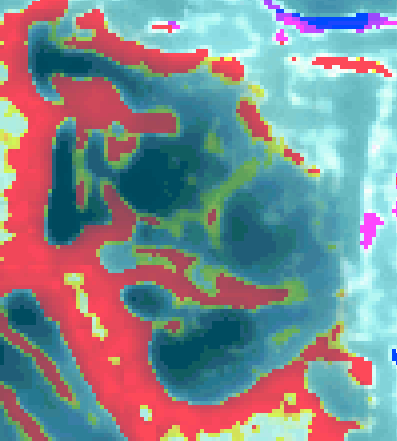
First war on terrorism
|
- The U.S. faced challenges from Barbary pirates, eventually engaging in the Barbary Wars
from 1801-1805 and again from 1815-1816 to protect American shipping interests.
- This period is considered America's first war on
terrorism.
- The Barbary Wars eventually ended the reign of
the pirates and European powers also ended the protection
money approach and took military action instead.
- It
wasn't until the French Army occupied Algiers in 1830, that
the era of the Barbary corsairs finally ended.
|
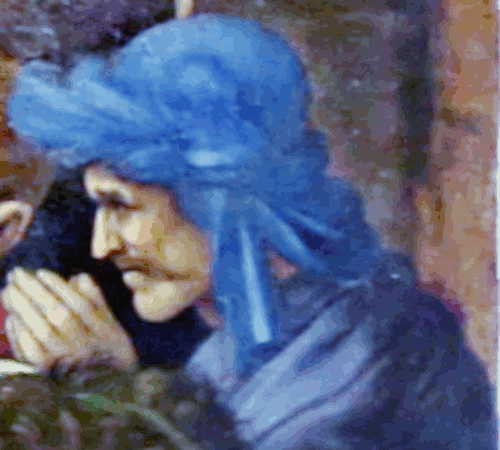
Celebrating Christ child |
- The man in a blue turban with his hands in
prayer is celebrating the Christ Child.
- Muslims respect and venerate Jesus Christ.
- They consider him to be one of Almighty God's greatest messengers to humankind.
- The Qur'aan re-affirms his miraculous birth and his miraculous abilities.
- Furthermore, his mother Mary is regarded as one of the most pure and exalted women of all creation.
- Of course, they were honored and thrilled to witness the
Christ Child along with the Magi and Filippio Lippi.
|
[And mention] when the angels said, “O Mary, indeed
Allah gives you good tidings of a word from Him, whose
name will be the Messiah, Jesus, the son of Mary –
distinguished in this world and the Hereafter and
among those brought near [to Allah ]. (Quran
3:45)
|
|
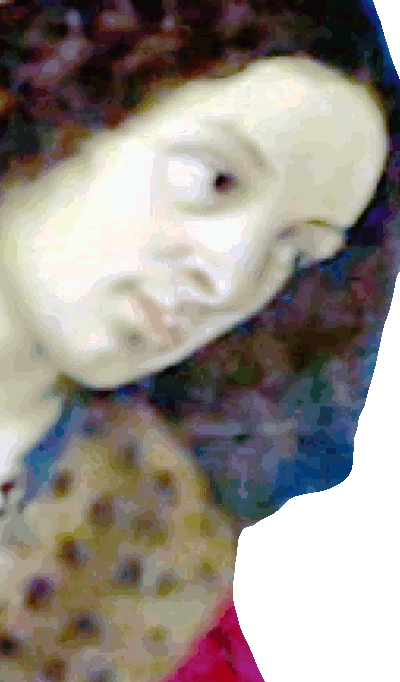
John the Baptist |
- It also should be noted that the Muslims worshiped John
the Baptist as the Messiah.
- However, John
the Baptist himself recognized that he was the forerunner, and
acknowledged that Jesus Christ was the Messiah.
- He died 3
years before Christ around 30 AD and this left the Muslims in
despair and shock.
- In the Bible, John the Baptist is portrayed as the
'forerunner' or 'precursor' to Jesus, preparing the way for his ministry by preaching repentance and baptizing people in the Jordan River.
|
For God so loved the world, that he gave his only begotten Son, that whosoever believeth in him should not perish, but have everlasting life. (John
3:16)
|
|
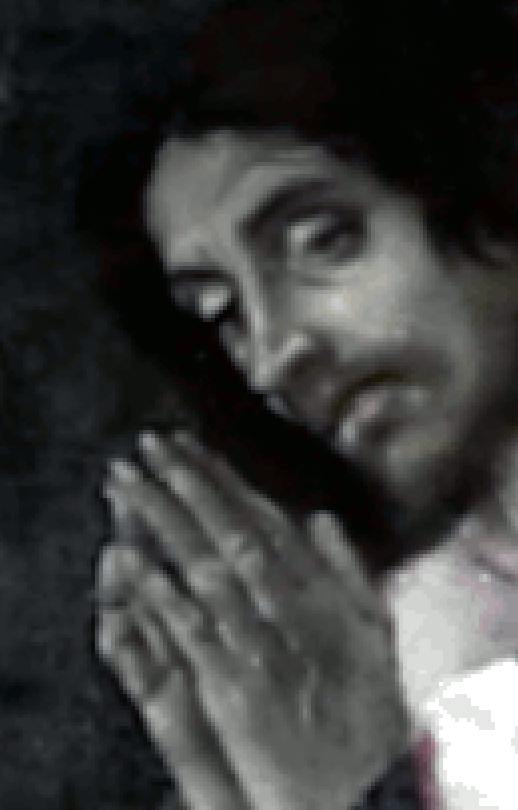
Role of Jesus Christ
|
-
The primary difference between Islam and Christianity is in the role of Jesus.
- Christians, depending upon who you ask, believe that he is either God incarnate or the son of God.
- Muslims, however, reject the notion that God has a son or is part of a
'trinity.'
- According to Islam, Jesus was a Prophet of God.
- He was a man and a Messenger who came to deliver God’s message to mankind.
- The pre-Christian Gnostics also had a problem with the
concept of trinity because they knew that in the lower ego
material world, Yaldabaoth (Israel) and Sabaoth (YHWH) were in
no way linked to Jesus Christ even though he did help them.
|
And [make him] a messenger to the Children of Israel,
[who will say], ‘Indeed I have come to you with a sign
from your Lord in that I design for you from clay
[that which is] like the form of a bird, then I
breathe into it and it becomes a bird by permission of Allah. (Quran
3:49)
|
|
Christian Moors |
|
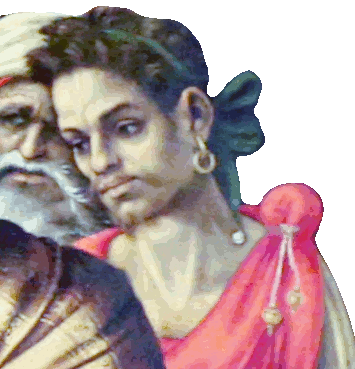
Ethiopian
|
- Florentines began to show blacks with dignity and importance at the end of the
15th-century.
- So this would be early attempts at showing
'diversity' in art.
- In the 1490s, a half dozen paintings show Africans both prominently and in positive roles, as recent or future Christian converts.
- This must reflect the Florentines increased awareness of
African Christians who they had just recognized in Ethiopia.
- Artist
Vasari praised the 'Moors and Indians in strangely decorated
attire' in his later writings, evidently referring to a half
dozen figures on the far right, and some in the background.
|
The 'Ethiopian' people should be interpreted as all
the gentiles, and fittingly by people who are black;
for the Ethiopians are black. Those people who were
black are the very ones who are called to faith.
(Augustine on Psalm 73)
|
|
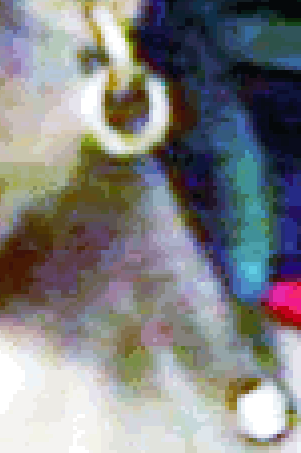
Moor gold earring and pearl
|
- These figures wear colorful turbans, and the
dark-skinned man in the foreground sports a gold earring and a
pearl.
- Scholars have described him as black, although his
hair, skin tone, and facial features look more like North
African to modern viewers.
- When Vasari
described this painting and a few others, he repeatedly used
the term 'Moors together with Indians.'
- Although Africans
were not known to wear earrings, it's thought that Lippi had
heard about the Ethiopian's extensive riches and wanted to
represent their wealth.
|
During Filippino Lippi's life, new artwork
increasingly contained elements of the Orient. At the
of the year 1441 during the Council of Florence, four
Ethiopian monks were present, who attested that their
ruler controlled a Christian kingdom in Ethiopia
larger than all of Europe.
(Wikipedia)
|
|
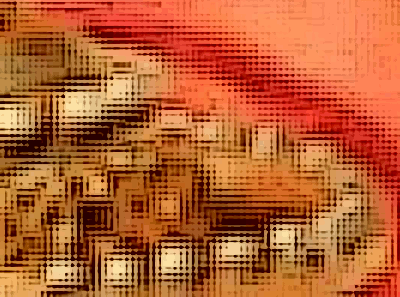
The pearl
|
- Shakespeare frequently used the pearl in relation to exoticised characters to reinforce their physical contrast to his society’s ideals of beauty.
- The boy with the pearl earring: the decorative art of slavery.
- The Persian Gulf has always been the most important source of pearls for the countries surrounding it.
- In the Islamic era pearls have were widely used as jewels
and were pierced and strung to make necklaces or sewn onto textiles
such as garments, tents and cushions.
- They were also used to decorate hats, crowns, daggers, and scabbards
and employed in a wide array of other objects of art; and carried as an easily convertible portable wealth.
|
Pearls were a common symbol of purity and virtue in sixteenth-century English culture and were heavily relied on by Elizabeth I to construct her image as the “Virgin Queen.” Elizabeth’s choice to wear ‘bushels’ of pearls in portraiture and court presentations came at the latter end of the era of pearl popularity (c.1530s-1600s) which resulted in their price increasing ‘by one estimate, sixfold in the first sixty years of the [sixteenth] century.’
(Mirabella 2016)
|
|
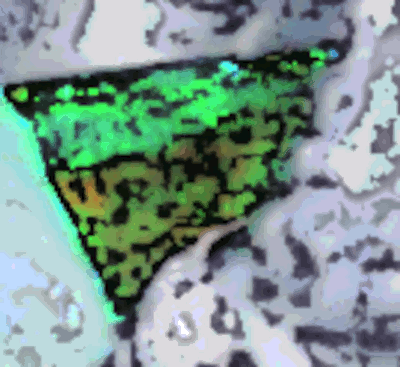
Moor emerald cluster
|
- Blackamoors came from Spain into Italy mostly Venice they were part of the merchant class and rich.
- Think of Shakespeare’s Othello who was a Moorish military commander who was serving as a general of the Venetian army in defense of Cyprus against invasion by Ottoman Turks.
- These were proud and well-respected men and many of them were wealthy.
|
O, beware, my lord, of jealousy:
It is the green-eyed monster which doth mock
The meat it feeds on.
(Shakespeare, Othello)
|
|
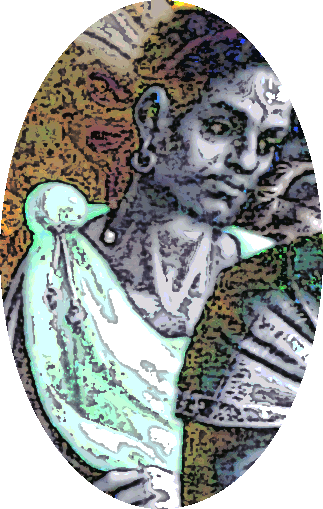
Blackamoor brooches
|
- Blackamoor jewelry from Venice in Italy first
appeared in mid-1800s when Moors from Spain entered Venice and they became merchants.
- Merchants were second in line to Royalty and they were often
treated as such.
-
Blackamoor brooches were prized by many and only affordable by those of means.
- There was no discrimination of class or skin color at that time
and what we know now as discrimination because of skin color
did not exist.
- This jewelry should not be confused with
tacky American pieces that came out in the 1920s.
|
To say this jewelry is discriminatory is ridiculous
and these Blackamoors are especially important to
Venation’s and most of Italy. Royalty, titled
individuals, and the upper class wore these amazing
works of art as a symbol of their wealth and status.
(crisnottijewels.com)
|
|
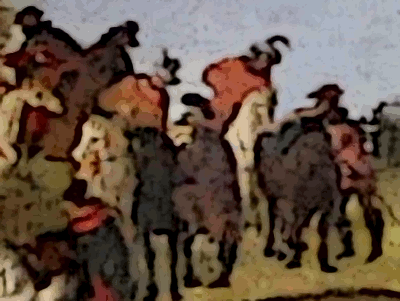
Inclusion and separation
|
- Filippino used various visual strategies to express both
inclusion and separation; specifically, he depicts both black figures on the margins, both literally and symbolically: they stand at the edge of the scenes.
- There have been other paintings by miscellaneous artists
where historians have discovered that blacks were repainted to
whites, and vice versa, whites were repainted to blacks.
-
Watch: Ethiopian Christians in Florence: Filippino Lippi’s Adoration of the Magi and ‘Miracle of St Philip’.
|
The Europeans were intrigued by this large Christian kingdom and drew connections with their prior knowledge of the mythical figure of Prester John. This motivated European artists, especially those of the Italian Renaissance, to increasingly include dark skinned figures in kings in the Adoration of the Magi.
(Wikipedia)
|
|
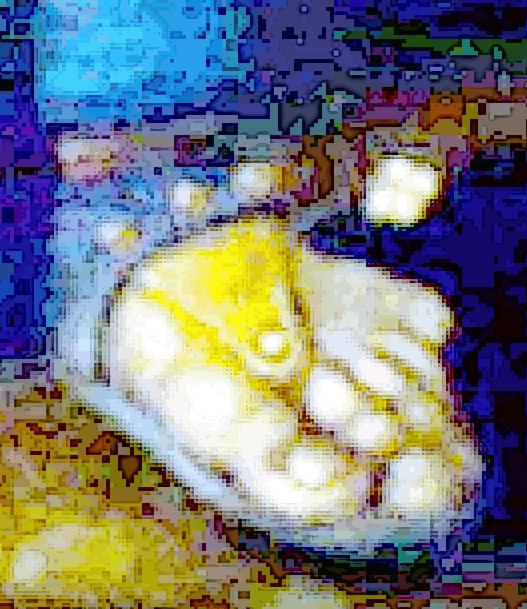
Gentile
|
- In early Christian writings, biblical references to
Ethiopians, led to two main interpretations; either they could
indicate sinners, or like Augustine, they represented
Gentiles.
- In contrast, where many images of black figures
served as metaphors for evil, Lippi's use of Moors and Indians
in this altarpiece represents a more positive and Augustinian
understanding of black-skinned Gentiles.
|
God shall bless us; and all the ends of the earth shall fear him.
(Psalm 67:7)
|
|
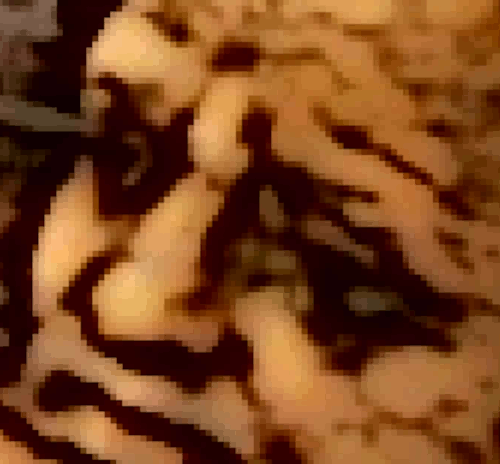
Dark-skinned Gentiles
|
- The inclusion of the dark-skinned Gentiles such as the
Moors, with the
Jewish man and his money bag, along with the portraits of the
Medici patrons, strongly indicate that Lippi was given
specific details of what was required in the painting.
-
Early artwork in Augustine churches did not show any blacks.
- The motivation for the bold decision to include the black
figure, and to show him as first among the Gentiles, may well
lie in the growing of Christian Africans in the late
quattrocento.
|

Madonna and Child
|
- In Filippino Lippi's, Madonna and Child,
1484, he shows an early image of enslaved people in renaissance Florence.
- There are 3 groups of slaves performing various tasks such
as carrying agricultural tools, pouring water and fishing, 3
of the slaves were black, and 2 were white.
- This painting showed what was going on at that time in terms
of slavery.
- The Portuguese were engaging in the slave
trade in West Africa and bringing slaves back to Europe.
-
The Ottomans, who had taken over Constantinople in 1453,
disrupted the flow of the slaves from the Eastern
Mediterranean.
|
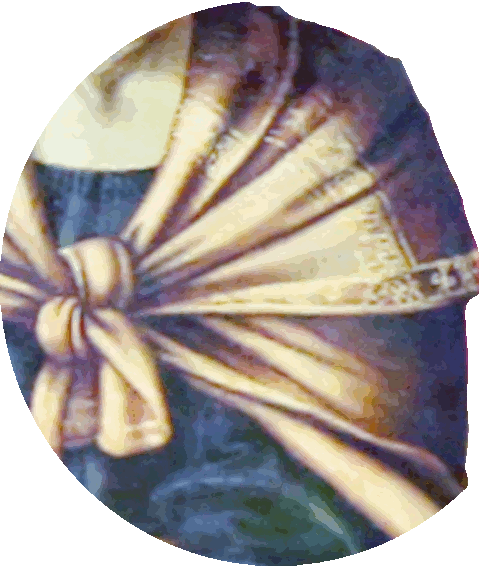
|

|
|
Enslaved |
- With the Portuguese exploration of Western Africa,
they began to trade for things, not only objects, but people,
and especially females.
- They forcibly brought them back to Portugal.
- It is likely that there were many
Sub-Saharan Africans enslaved in places like Florence at that
time.
- Italian nobleman Filippo Strozzi freed one of his
African slaves when he died as a way to atone because he
thought this would free him from the sin of slavery.
- The
painting shows that the culture was much more diverse and
complicated than most assume.
|
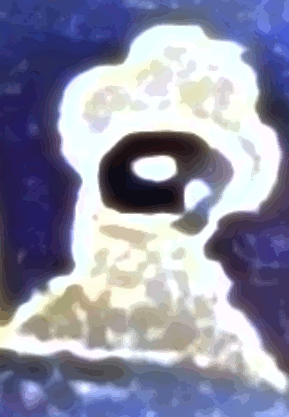
Odd Fellow George Washington
|
- What did our first president George Washington say about
all this?
- It was reported that George Washington
summarized the debate on how to perpetuate slavery of the
Moors, who were tagged 'black' in 1774 at the First
Continental Congress in Philadelphia with the following statement.
- Hold on to your chair because it's pretty horrible.
|
If we would agree to take the Fezzes and Turbans off the Moors’ heads and remove the sandals from their feet and enforce severe punishments, and to also swear a death oath between ourselves to religiously and faithfully not to allow anyone to teach the Moorish children who they really were or who their forefathers were, and only allow the Moorish children to be taught that they were truly Negroes, Black people, and Colored folks, 200 years from today the Moorish people would not know their nationality nor the national name of their forefathers. Also they would not know from which land or ancestors that they are descended from.
(First Continental Congress aka Odd-fellows Convention)
|
|
Filippino Lippi's White Dog |
|

Book of Tobit |
- Filippio Lippi completed an oil painting called
Tobias and the Angel in 1480 that is based on the
Book of Tobit.
- The two main figures are depicted walking through a landscape, accompanied by a white dog, with trees and a river, and a tall tower to the right.
- In the of Adoration
of the Magi, Filippio honored, his father, Filippo
Lippi, a monk, and shows him holding the dog, although it is
in the folds of his robe, hidden from view.
|
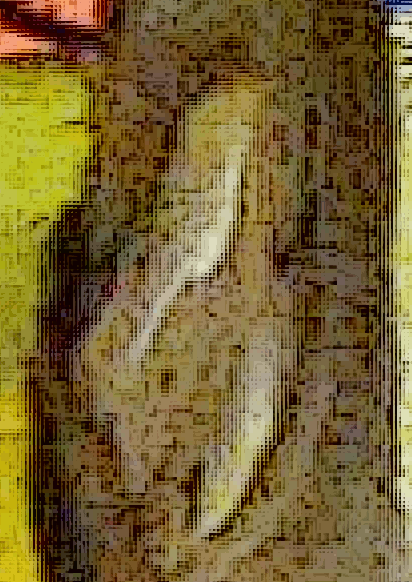
Tree with fish gall (Gaul) |
- In the Book of Tobit, Tobias, son of the blinded Tobit, was sent from Nineveh to Ecbatana to collect a debt.
- The archangel Raphael, disguised as the human Azariah, was sent to accompany Tobias on his errand.
- On the journey, the angel advised Tobias to catch a fish from the River Tigris and then to create
a remedy for his father's blindness using the fish's gall.
|
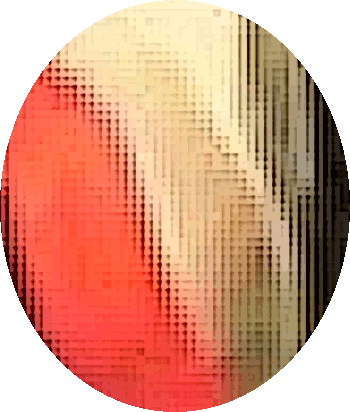
White dog roses |
- White dog roses symbolize the Virgin's purity and red carnations symbolize
the Incarnation and Passion of Christ.
In the context of whiskey, "white dog" refers to
unaged, or young whiskey, bottled straight from the
still, lacking the color and flavor imparted by barrel
aging, and is also sometimes called "white lightning"
or "white whiskey". (Assistant)
|
|

Leonardo da Vinci
The dog is somewhat invisible |
- Andrea del Verrocchio and
Leonardo da Vinci completed a version of
Tobias and the
Angel in the early 1470s while Leonardo was an
apprentice in his studio.
- Leonardo panted the fish and dog
at age 18 and this is considered his first professional work.
-
He was often portrayed in fellow artist Sandro
Botticelli's pieces wearing bright colored pinks and reds (and without
his face or feet showing).
- Speculation that the same thing is
going on here in Lippi's rendition, only here, Leonardo
represents Tobias' dog.

Almost invisible dog
Leonardo's white dog in Tobias and the Angel |
- Tobias' dog also went along on the walk, the only pet dog to appear in Judeo-Christian scriptures.
- It is
believed that Tobias' father gave the dog to him as protection because
of the silver they had to bring back from Persia.
- The
Israelites considered dogs unclean and they were not considered
man's best friend.
- Generally, a white dog is looking out for you and a black dog is an indication of danger.
When your motive is to be closer the the Lord Jesus through Bible study into the truth and search for the truth even to the point to cross bad doctrine lines, when you write scripture and ask for interpretation from Jesus then this a key to hear the voice of God, which should attract you closer to the Lord;
this is the white dog.... Where the black god parable is to judge the debator on the ideas of belief where true or false is not important and to be motivated by correction and scrutiny of others.
(city-data.com/forum/christianity)
|
|
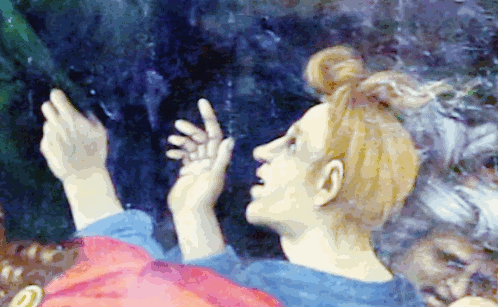
Familiar artist |
- The character of Leonardo also
represents Jacopo Saltarelli, in every Botticelli depiction,
who was an apprentice goldsmith charged with prostitution and engaging in sodomy with Leonardo and three other men.
- Accusations of this kind were common at the time, often as a way of harming reputations.
- Botticelli and Lippi went for it whenever they could
because Isabella d'Este's considered both of them as 'old
fashioned.'
Botticelli took the jest a step further, intimating that Leonardo’s weakness, or even strength, could be observed on the underside of his belly, an obvious reference to the sodomy charge against Leonardo and a 15th century slang defintion of ‘kite’ as a person who preys on others. (arnolfinimystery.com)
|
|
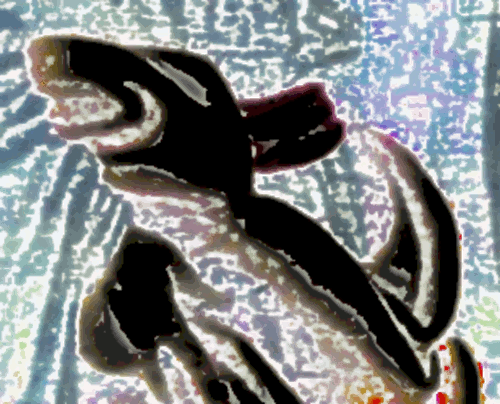
Leonardo dogged
on |
- It seemed that fellow artists had it out for Leonardo
because Isabella d'Este's who owned an important art gallery,
felt that Botticelli and Mantegna were 'old school' and
Leonardo was more modern.
- There seemed to be quite a
bit of jealousy against Leonardo and apparently one of the
reasons he left Florence for Milan in 1481.
|
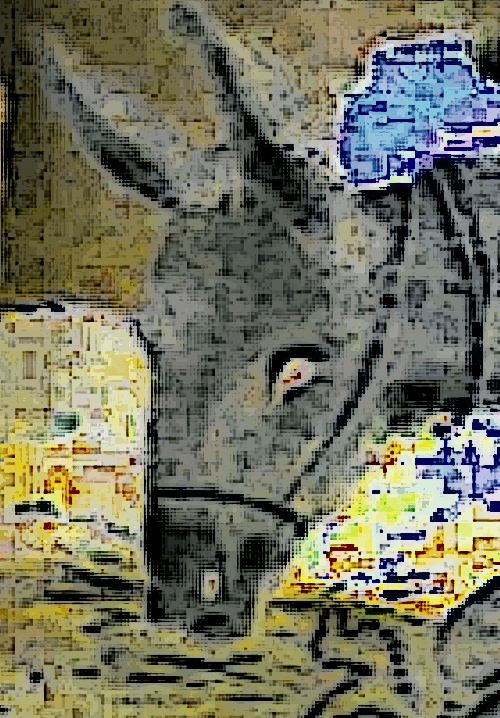
Lucifer the donkey
|
- Jesus came riding in on a donkey named Lucifer because
apparently Lucifer fell backwards into the 3rd sphere, animal
life, because his frequency was so evil and low-vibing.
-
Hey donkey, you're kind of cute now, here's a piece of hay.
|
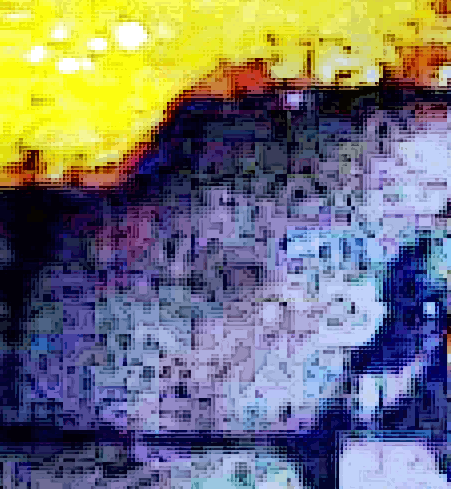 , ,
Hay |
Moral of the story!
- Did they only have greedy men and idiots running
the day?
|
|
|

